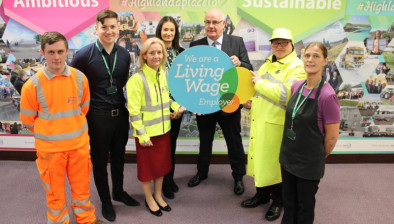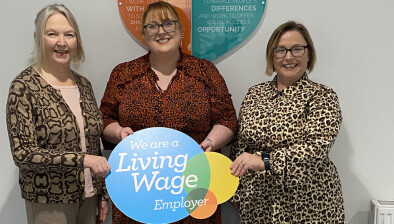KPMG: Number of Scots earning less than real Living Wage drops to new low
The number of Scottish workers earning less than the real Living Wage in Scotland has dropped by 13% in the last year, exceeding the decline seen across the UK as a whole (10%), according to analysis from KPMG.

Jenny Stewart, KPMG’s head of infrastructure, government and healthcare in Scotland
An estimated 380,000 people north of the border currently earn below the threshold of £9.00, 57,000 fewer than in 2018 (437,000). Equivalent to 17% of the workforce – almost two-thirds of whom were women.
The data, provided by IHS Markit, also reveals an improving picture for full-time female workers, with 11% (77,000) of women in Scotland in full-time roles, earning below the Living Wage, down from 12% (79,000) in 2018. However, while the gap is narrowing, only 8% (76,000) of men working full time in Scotland earn below the Living Wage, down from 10% (94,000) in 2018.
The findings also reveal there is still a long way to go for part-time workers in Scotland. 30% (155,000) of female part-time workers continue to earn below the real Living Wage, down from 35% (186,000) in 2018, while 40% (63,000) of men working part-time earn below £9.00, down from 44% (72,000) in 2018.
Jenny Stewart, KPMG’s head of infrastructure, government and healthcare in Scotland, said: “The latest data provides clear evidence that employers have taken a far more proactive stance on addressing in-work poverty and gender imbalance. Real progress is being made, which is welcome news.
“However, the work can’t stop here. There remains a gap between male and female workers in Scotland, and both males and females working in part-time roles continue to suffer proportionally lower rates of pay. There are understandable challenges, but those who can could be leading by example by taking action right now to improve the national picture.
“Earlier this year, KPMG, working in collaboration with the CBI Scotland and Fraser of Allander Institute, produced the Scottish Productivity Index, which highlighted that by addressing gender and pay imbalances productivity can be improved. The evidence is clear, and the motivation is now there. By improving pay across the board, we can address long-term economic challenges, and create a more sustainable, competitive, and successful economy in Scotland.”
Across the UK, the KPMG analysis also reveals significant progress has been made, with just under one-in-five (19%) of UK jobs currently paying below the threshold of £9.00 and £10.55 in London, which is down from 22% in 2018. This is the lowest figure for seven years and represents a decrease of around 560,000 jobs paying less than the real Living Wage.
Katherine Chapman, director of the Living Wage Foundation, added: “We know the campaign for a real Living Wage has had a huge impact in tackling in-work poverty. Over the last year, we’ve seen more and more responsible organisations recognise that a real Living Wage is not only good for workers and their families, but it also makes good business sense.
“However, with over five million workers still paid below the Living Wage – and 24% of women compared to 15% of men - it’s clear we need to see more employers step up and commit to pay a real Living Wage.”







